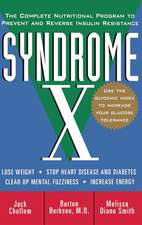Prediction of Burnout
Autor Felix Ladstätter, Eva Garrosaen Limba Engleză Paperback – 30 apr 2008
Preț: 474.04 lei
Nou
Puncte Express: 711
Preț estimativ în valută:
90.71€ • 94.96$ • 75.05£
90.71€ • 94.96$ • 75.05£
Carte disponibilă
Livrare economică 15-29 martie
Preluare comenzi: 021 569.72.76
Specificații
ISBN-13: 9783836661416
ISBN-10: 3836661411
Pagini: 248
Dimensiuni: 210 x 297 x 13 mm
Greutate: 0.6 kg
Editura: BoD
Locul publicării:Germany
ISBN-10: 3836661411
Pagini: 248
Dimensiuni: 210 x 297 x 13 mm
Greutate: 0.6 kg
Editura: BoD
Locul publicării:Germany









